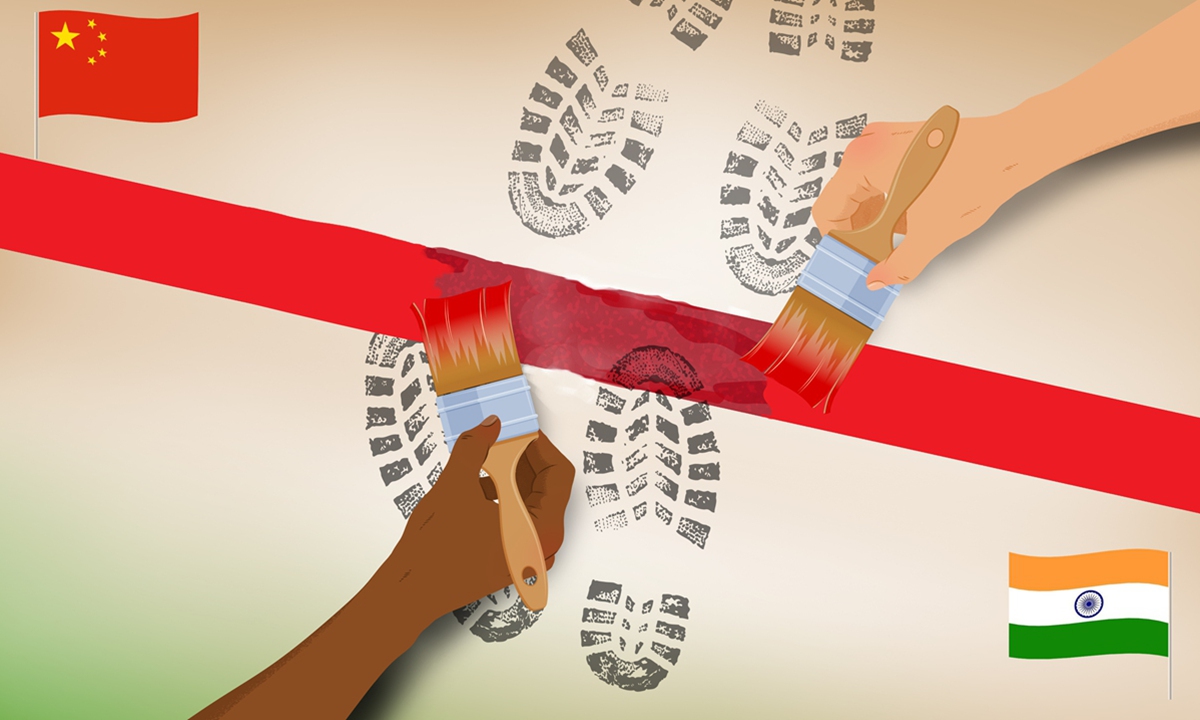
China India Photo: GT
The Indian media outlets are jealous again, this time toward Chinese "well-off" villages along China's border with India. They cited the Advisory Board of the Global Counter Terrorism Council which said that China has built 680 prosperous villages along the border area. According to Indian media, "these villages are meant to lure the Indian villagers towards a better Chinese life."
The Chinese living in the border areas are much better off than the Indians living across the border. Improving the living standards of villages, including those in the border areas, are part of China's broader poverty alleviation efforts, the achievements of which are known to the world.
Since reform and opening-up, China has lifted nearly 800 million of its population out of poverty. The per capita disposable income of the rural poor increased from 6,079 yuan ($941) in 2013 to 12,588 yuan in 2020, up by 11.6 percent per annum on average.
These efforts align with the Chinese government's people-centered development concept; by contrast, since Indian Prime Minister Narendra Modi took power, his economic achievement has been scarce, and the government he leads has put too much emphasis on military sector, Xie Chao, an assistant professor at the Institute for International and Area Studies of Tsinghua University, told the Global Times.
"Exhaust all the resources to build military power or improve people's livelihood? This is a matter of choice. China and India are both populous developing countries, but hold totally different views toward people's livelihood. The Indian government has chosen the wrong direction," said Xie.
In the past two years, the Indian government has realized the development gap with China at the border and has been increasing investment in this regard, especially on infrastructure. Nonetheless, while China's poverty alleviation and border development aim to improve people's livelihood and coordinate with national goals, India's infrastructure plan always has China as its imaginary enemy.
Media reports cited Indian Defense Minister Rajnath Singh last year, saying that India has doubled the budget for vital roads and bridges along the border in recent years, only as a response to "Beijing's rapid infrastructure development." But in the end, Chinese villagers at the border live a well-off life that the Indians are "envious of."
Long Xingchun, a senior research fellow at the Academy of Regional and Global Governance of the Beijing Foreign Studies University and president of the Chengdu Institute of World Affairs, told the Global Times that even if the Indian government pours in more investment to narrow the development gap with China, India cannot achieve it as it requires the support of overall national strength.
A peacefully and stably developing China can serve as a good reference to India. Be it Indian media or think tanks, if they only view Western countries as a model and keep confrontation with its biggest neighbor - China - in mind, they will become a barrier to their country's development. In the past few years, we have already seen how the anti-China fever of certain Indian elites managed to divert the country's attention from focusing on real domestic development issues to unnecessary China bashing.
It is natural if one admires or even envies others who live a better life. But to shake off the jealous tone, the Indian media should help the government reflect on its wrong path.
If India can build its own "well-off" villages, it will be a contribution to peace at the China-India border.




